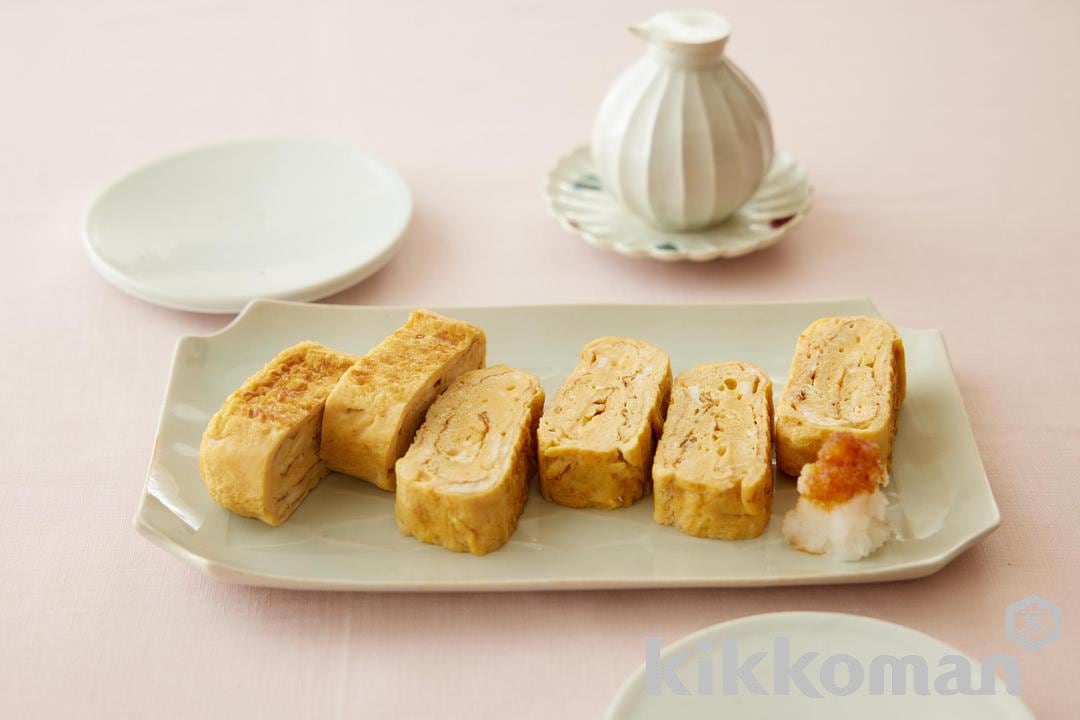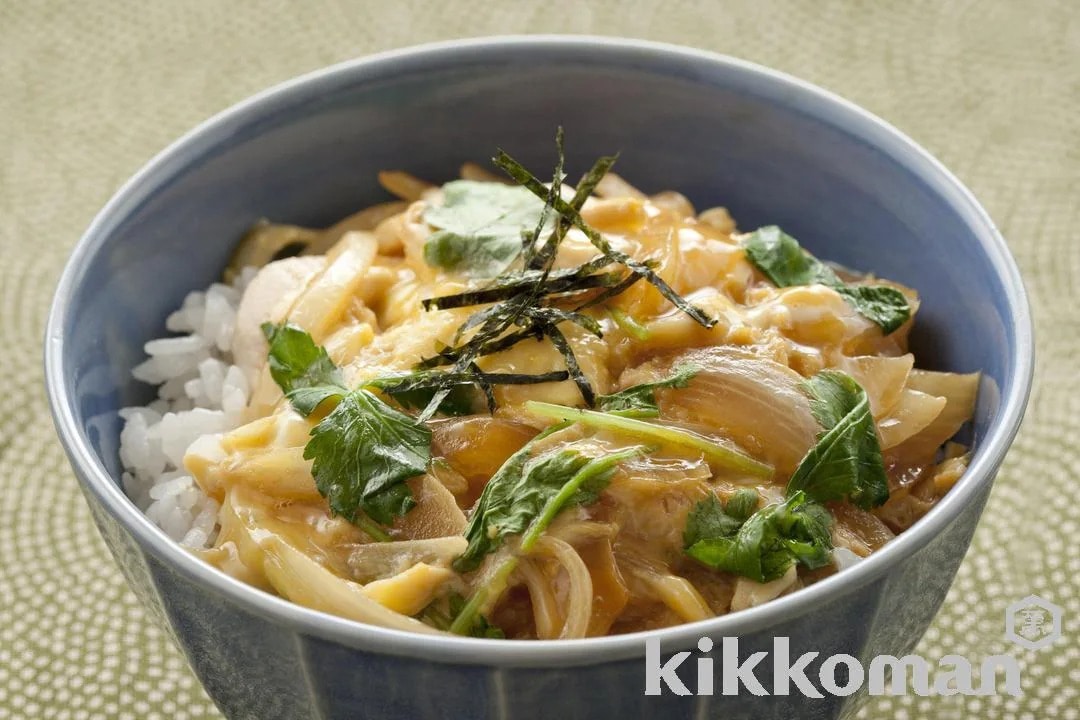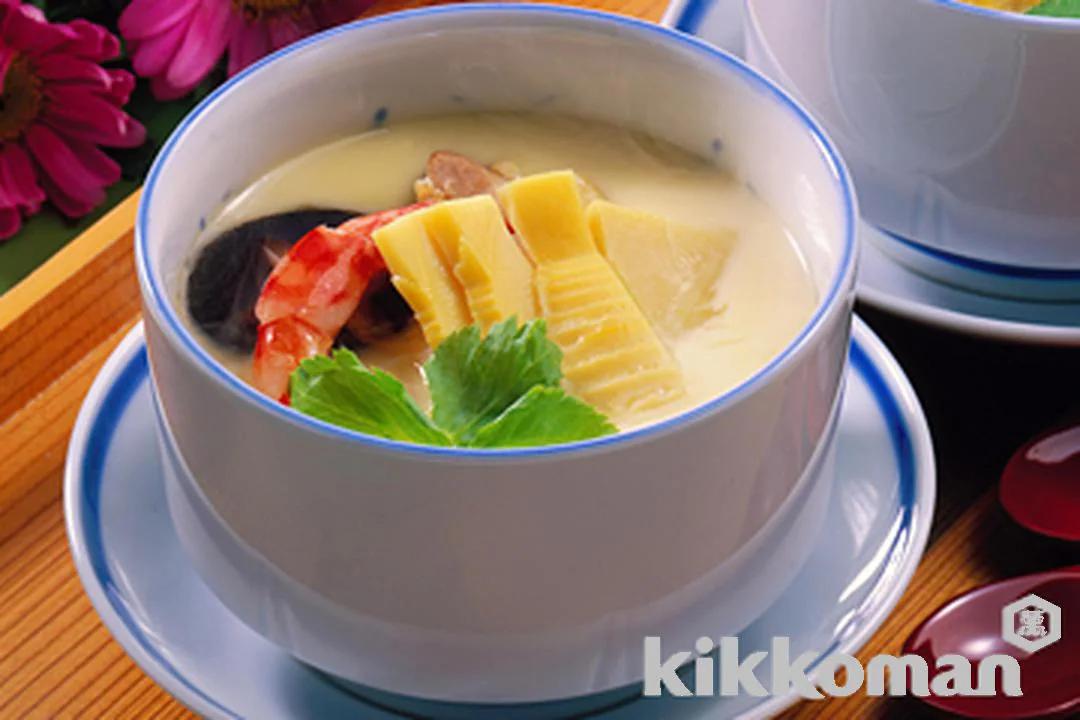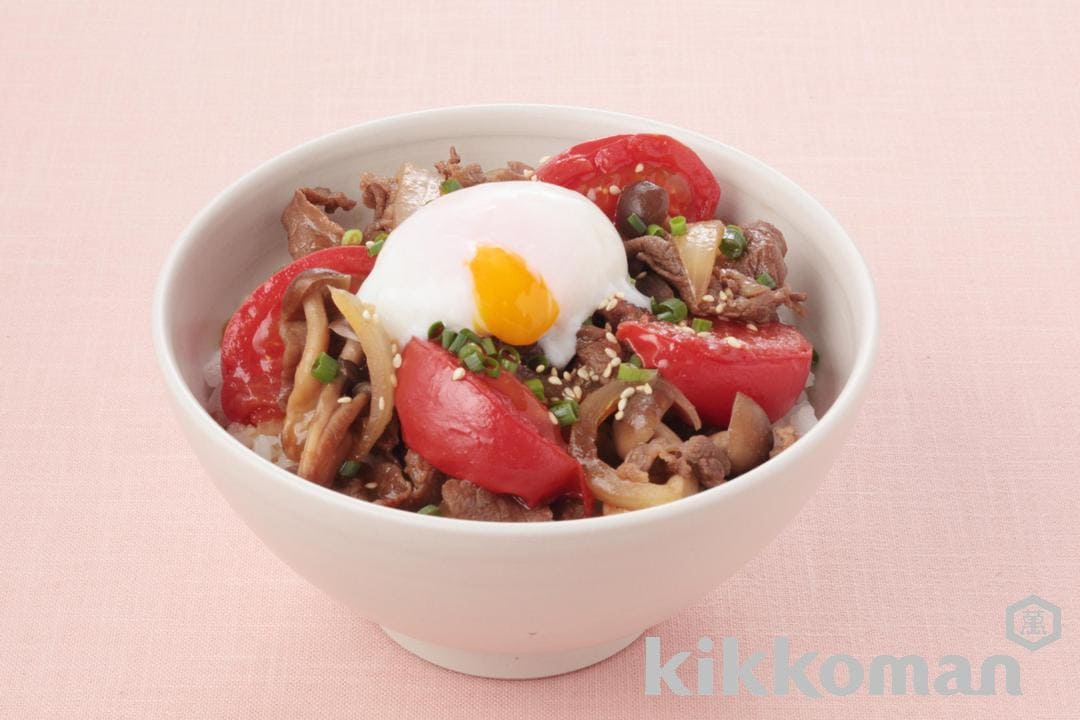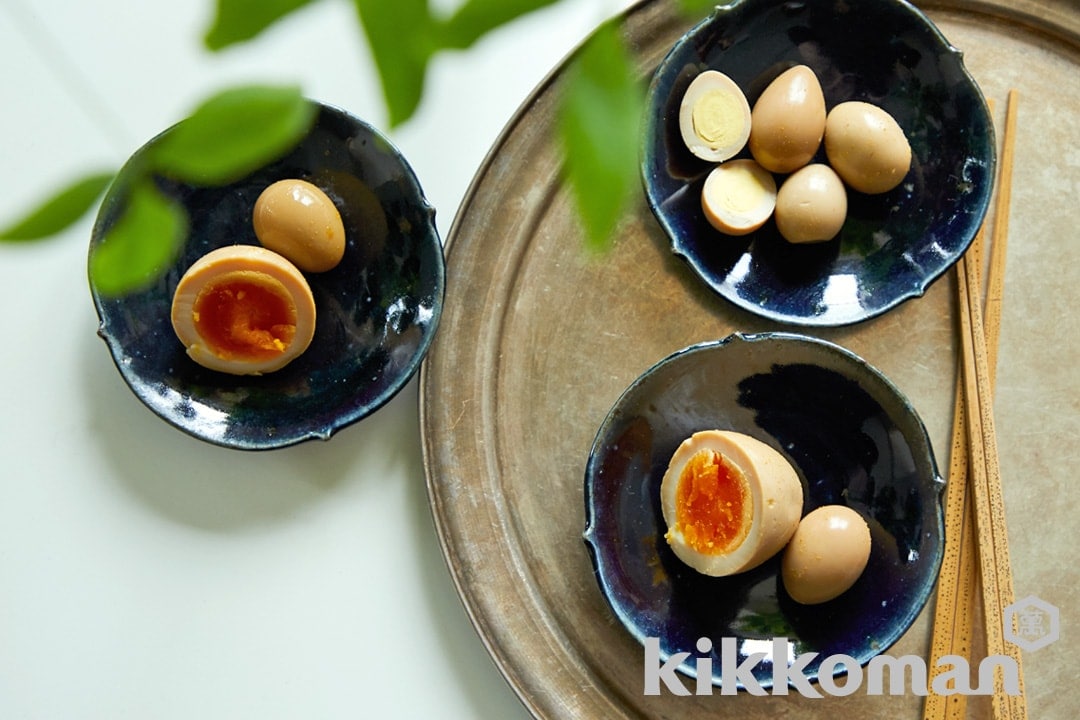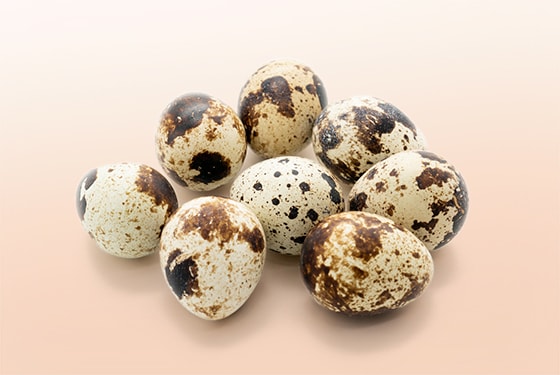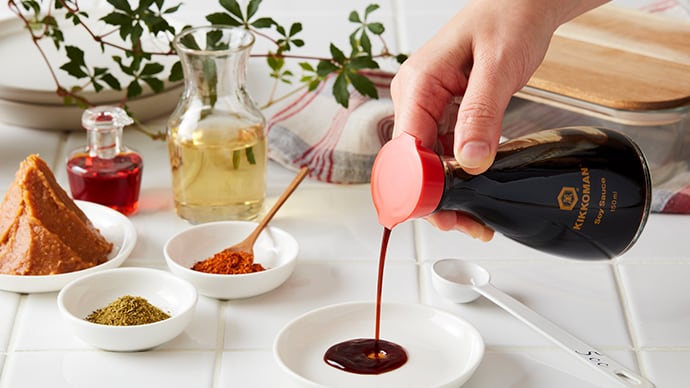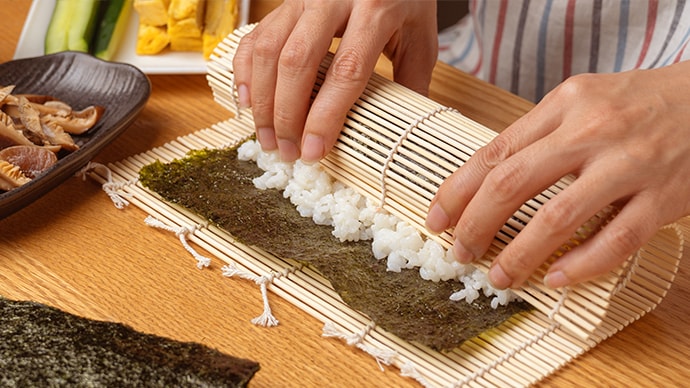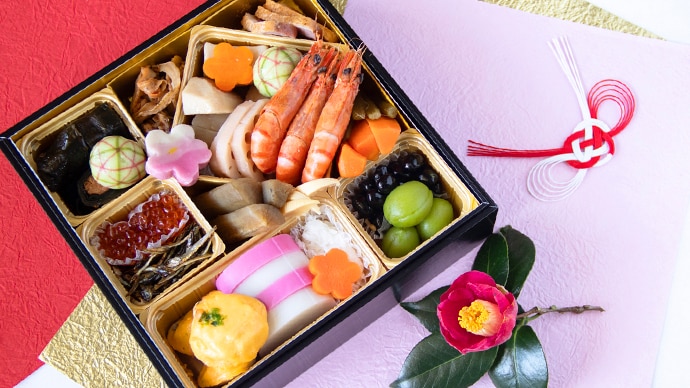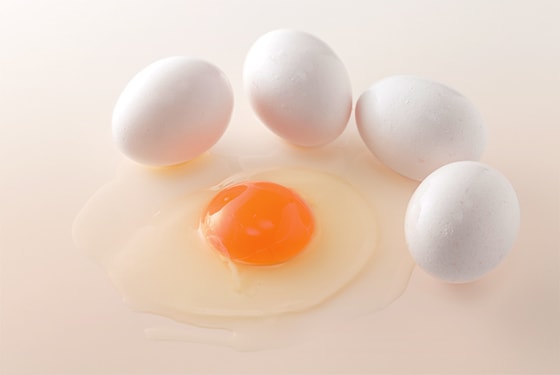
High-protein nutrition that pairs perfectly with rice dishes
What are eggs?
Eggs (卵, pronounced “tamago”, in Japanese) are often considered the perfect food due to being packed with a wide range of essential nutrients, excluding only vitamin C and dietary fiber. In Japan, eggs became a common pantry ingredient after World War II, as western eating habits became more widely incorporated into the Japanese diet. Some unique Japanese dishes that star eggs as the main ingredient are “tamagoyaki” (rolled omelet), “tamago kake gohan” (raw egg over rice) and “oyakodon” (chicken and egg rice bowl). Eggs are used throughout Japanese cuisine boiled, as in “oden” (Japanese hot pot of ingredients in soy sauce-flavored dashi broth), in omelet-form, as with “omurice” (thin omelet-wrapped seasoned rice), as an essential ingredient in tempura (Japanese-style deep-fried ingredients) batter, as a topping for udon and soba noodles, or simply fried, as with “medamayaki” (fried egg).
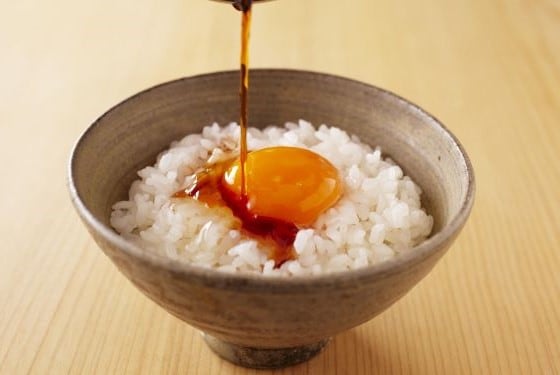

Nutrition facts
Eggs are are known to have a good balance of all nine essential amino acids that cannot be produced in the body. They also contain a lot of calcium, iron, and vitamins A, B1, B2, D, and E.
When the choline contained in the egg yolk lecithin enters the brain, it becomes a neurotransmitter called acetylcholine, which plays an important role in brain health and neurotransmission. Choline is also thought to be involved in rising blood pressure, and in some countries, recommended amounts are set as an important nutrient.
In addition, egg yolks also contain antioxidants such as lutein and zeaxanthin, which, together with the vitamins contained in eggs overall, contribute to vision health. Although eggs contain a lot of cholesterol, they also work to lower blood cholesterol, and recent research has led to the idea that healthy people can eat one or two eggs every day without affecting their cholesterol levels.
Boiled eggs and chawanmushi (savory egg custard) are recommended cooking methods for eggs that allow you to efficiently consume their nutrition, as the vitamins are not easily destroyed due to the low heating temperature. Avoid long-term heating at high temperatures, as this releases a compound called oxysterol.
Storage to prevent food loss
Store with the pointed end facing downwards in the refrigerator. As eggs are sensitive to temperature changes and vibrations, store on shelves inside of the refrigerator rather than in the door pocket.
Trivia
The white stringy portion of the egg white is called a "chalaza" (prounounced cuh-LAY-zuh), which helps keep the yolk centered and protects it from shock. Although some people prefer to remove the chalaza, its protein content makes it worth eating together with the yolk and egg white, unless whipping up a dish calling for extra smooth texture, such as custards.
Caution
As whole eggs cooked in a microwave may explode, avoid using a microwave to prepare boiled or fried-style eggs. Egg dishes for which the yolk portion is broken apart, such as scrambled eggs and omelets can be cooked in a microwave. Raw eggs are regularly consumed in Japan. However, to avoid food poisoning and to safely enjoy home-cooked meals, we ask you to adhere to the guidelines provided by your local Food Safety Information Center for the procurement, storage, cooking and other preparation methods of raw eggs.
Cooking Basics
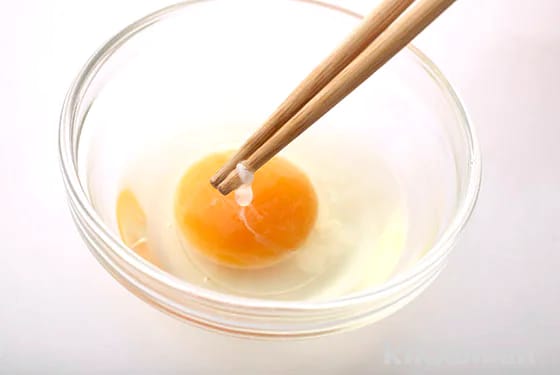
The chalaza serves the role of holding an egg yolk in place. It is edible, but if you prefer, pick it up with cooking chopsticks (or a fork) to remove.
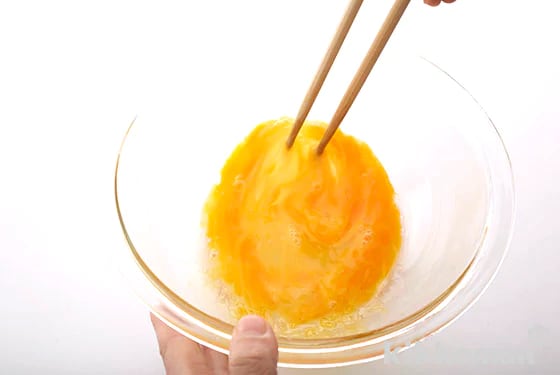
When making a Japanese fried egg omelet, steamed egg custard or such where you desire soft and smooth eggs keep your chopsticks low in the bowl and beat using small movements as if slicing through the egg white. For scrambled eggs and egg-drop dishes, if you beat using big movements and in a way that does not fully mix the yolks with the whites, you will achieve fluffy eggs when cooked.
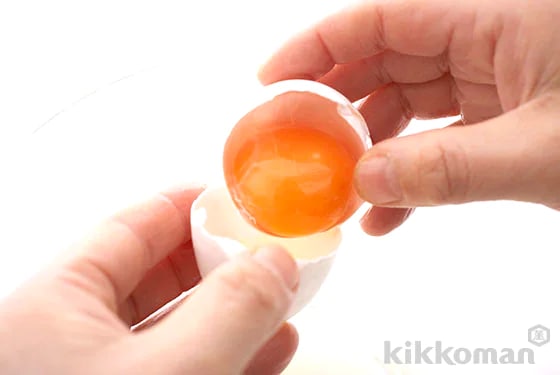
Crack the shell so that it is evenly divided into 2 halves. Over a bowl to catch the egg white, pass the egg yolk back and forth between the two egg shell halves. The trick to this method is splitting the egg shell in as perfect halves as possible at the start.
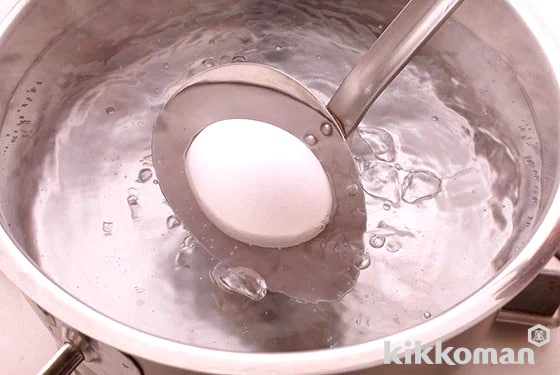
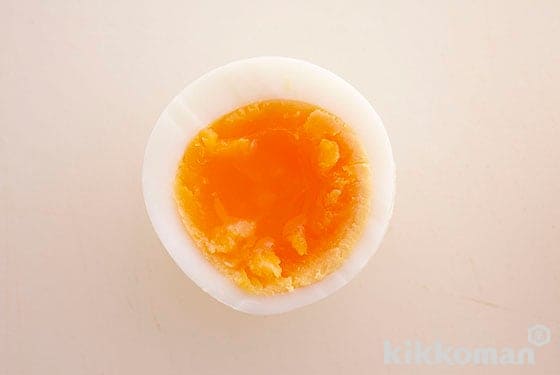
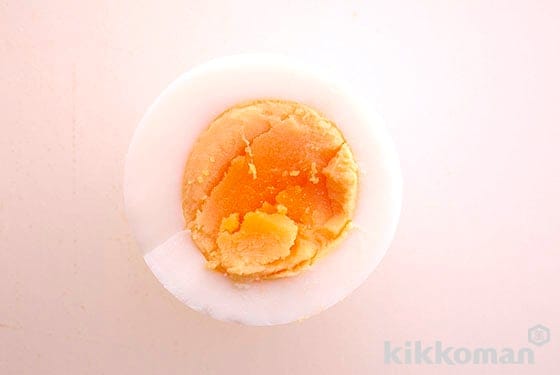
Remove the eggs from a refrigerator about 30 minutes prior to return to room temperature. Place a small amount of salt into boiled water, then add in the eggs. Using a ladle to gently add in the eggs can help prevent cracking. Once the desired boiling time has passed, remove the eggs into cold water and allow to cool completely.
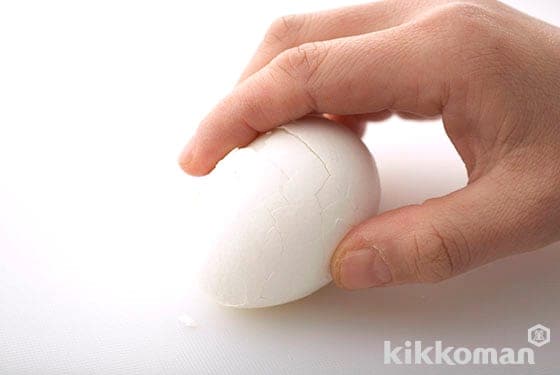
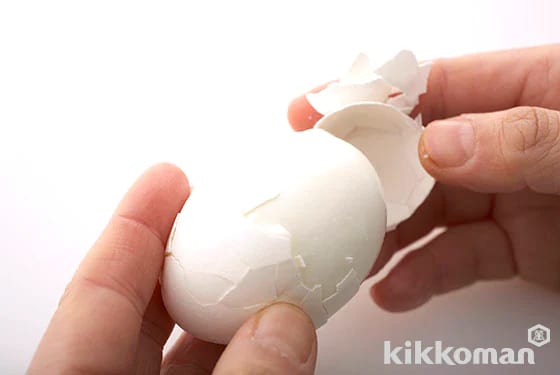
If you make several small cracks in the shell, it will be easier to peel. Also, immediately placing boiled eggs into ice cold water will also make peeling easier.
Ingredients
- eggs
- 3
- salt
- 1/4 tsp
- sake (cooking sake)
- 2 Tbsp
- potato starch (or corn starch)
- 2 tsp
- vegetable oil
- as needed
Directions
1.
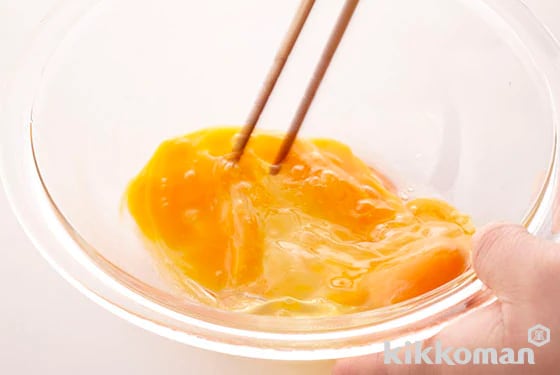
Crack open and beat the eggs together, add in the salt, sake and potato starch and mix in well.
2.
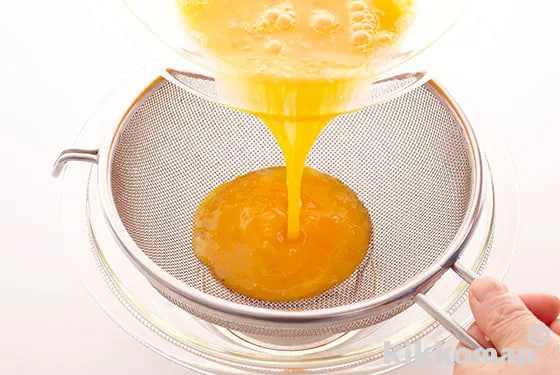
Strain through an all-purpose strainer. This step helps to achieve a smoother, thinner omelet.
3.
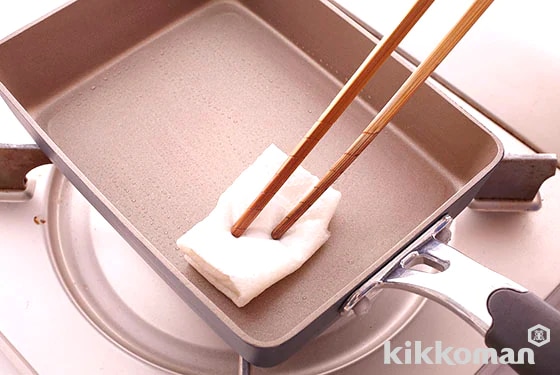
Use a paper towel lightly dipped in vegetable oil to lighly coat a heated square-shaped fry pan.
4.
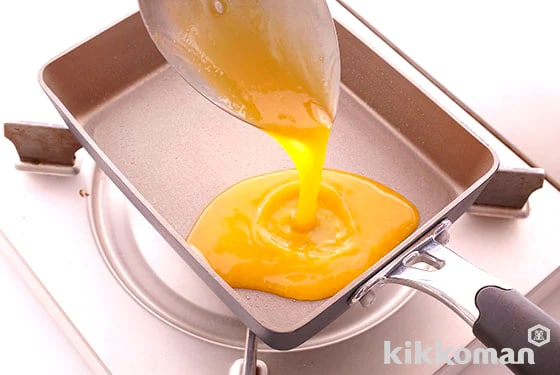
Pour a ladle of the egg mixture into the pan.
5.
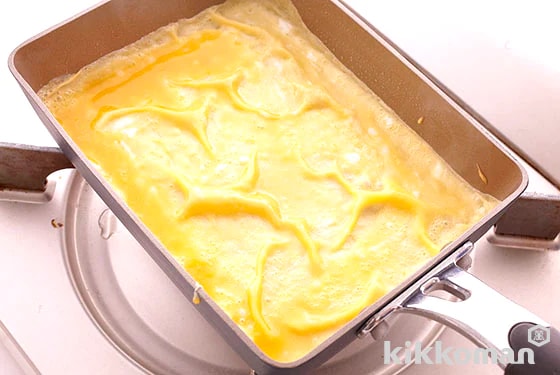
Swirl the pan to evenly distribute the egg mixture over the entire pan.
6.
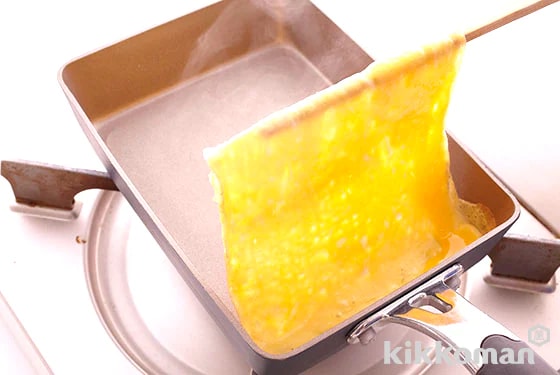
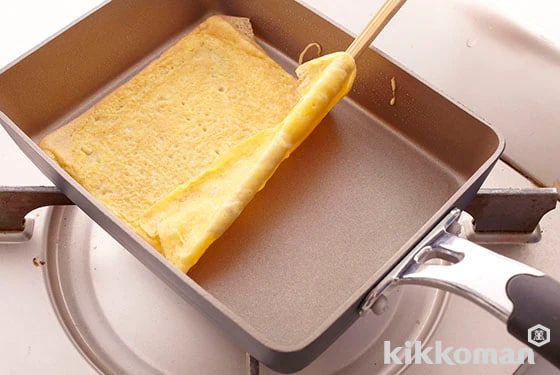
Once the egg becomes cooked on the surface, use one cooking chopstick to pick up and flip over the usuyaki tamago. Allow to cook on the opposite side for one moment, then remove onto a cutting board. Repeat this process with the remaining egg mixture.
7.
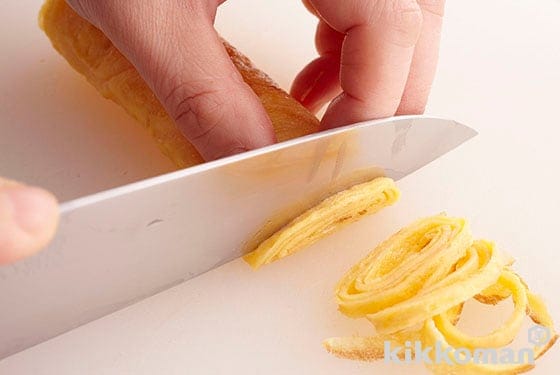
Stack the usuyaki tamago and cut into thin strips. If you roll these up first, it will be easier to thinly slice up.


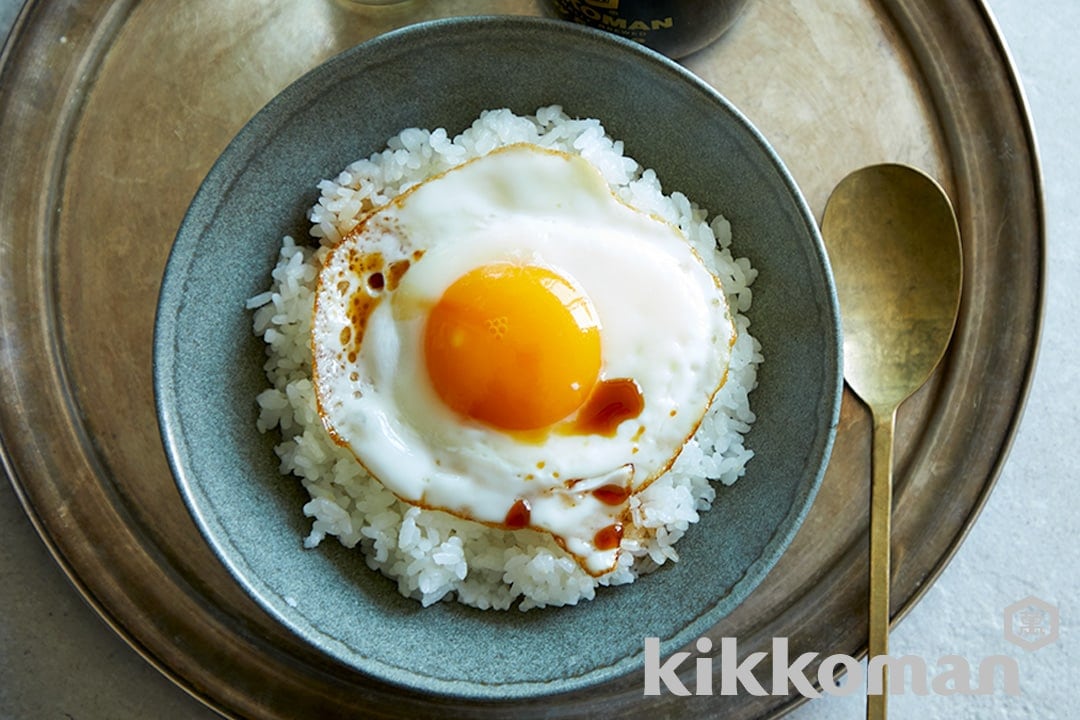
 5min
5min 348kcal
348kcal 200mg
200mg